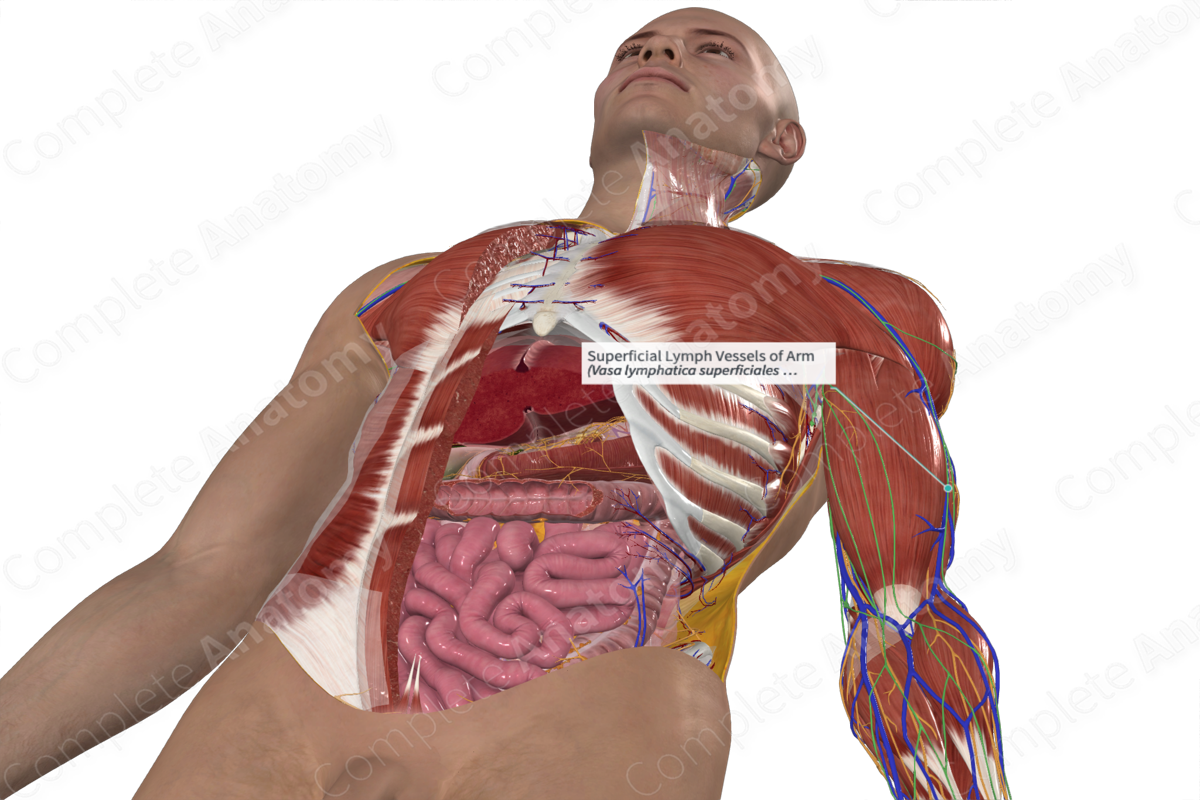
Quick Facts
Location: Loose epifascial connective tissue of arm.
Drainage: Skin and subcutaneous layer of arm.
Direction of Flow: Lateral axillary nodes > central axillary nodes > infraclavicular nodes > subclavian trunk > right lymphatic duct (right) or thoracic duct (left).
Related parts of the anatomy
Description
Within the arm there are three bundles of superficial lymph vessels that transport lymph from the skin and subcutaneous layers of the hand, forearm, and arm into the axilla. The vessels are named according to their location; median, dorsolateral, and dorsomedial bundles.
The median arm bundle is a continuation of the three superficial forearm bundles (radial, ulnar, and median). The median upper arm bundle ascends vertically, without branching to the axillary lymph nodes.
There are one or two vessels in the dorsolateral lymph bundle of the arm. They follow the cephalic vein, along the pectoral sulcus, and terminate in the infraclavicular nodes, draining the deltoid region of the upper arm.
There are one to two vessels in the dorsomedial bundle that ascend to the axillary nodes. The dorsomedial bundle is a continuation of the ulnar forearm bundle.
Learn more about this topic from other Elsevier products
Lymph Vessel

The lymph vessels are blind-ending capillaries which have gaps in their endothelial walls enabling protein molecules to move through easily.



